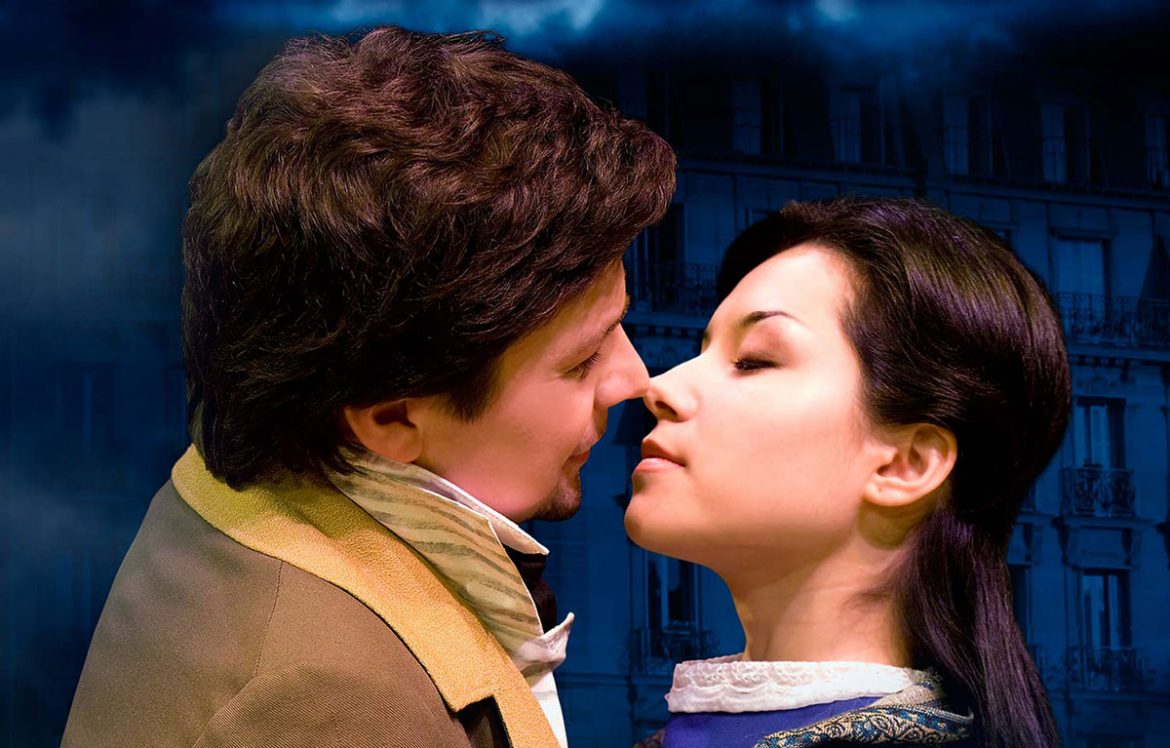The last time I reviewed an Ellen Kent production (Aida, October 2016), I expressed my sadness that the house was only half-full.
I was delighted to see a much larger and more responsive audience for La Bohème, even including a few older children.
Opera is trying hard to shake off its image of being stuffy and elitist, only enjoyed by elderly people in tiaras and tuxedos, and director Ellen Kent in particular really seems to be succeeding in this.
La Bohème is the original “artist starving in a garret” story, dealing as it does with four penniless friends in 1830s Paris, and two women who become part of their lives – the pious, gentle Mimi and the flirty, confident Musetta.
It’s well known as being the opera in which the heroine dies of TB, while still singing with enormous gusto. Wilful suspension of disbelief is a must for this work.
Familiar faces
Several members of the cast were familiar to me from previous Ellen Kent productions. I particularly enjoyed reacquainting myself with the rich, velvety bass of Vadym Chernihovsky (Colline, the philosopher), having picked him out as one of the highlights of Aida (High Priest Ramfis).
I only wish he could be given a major part, instead of these smaller but important roles. Operas which use a bass as the hero are few and far between, but there are plenty of other meaty roles that I would love to hear him sing.
Another familiar name was the baritone, Iurie Gisca (Sciarrone in Tosca, Amonasro in Aida). He is perfectly cast as Marcello, the painter, a part which allows us to enjoy his talent for comedy. Having only ever heard the music, I was delighted to discover how funny this opera is!
Olga Perrier (soprano), last seen as the eponymous heroine of Aida, not only has a powerful and well-controlled voice, but she can turn from comedy to pathos in the blink of an eye. I thoroughly enjoyed her performance as Marcello’s love interest, the coquettish Musetta, full of cheek and charm.
Sadly, the central characters of Mimi and Rodolfo were disappointing. Vitalii Likovetskyi (tenor) seemed to be having trouble with his upper register, which was rather strangled. He could not sing softly at that end of his range at all, and so his voice lacked colour and shade.
Like his singing, his acting was much poorer here than when he played Radames in Aida, a performance which greatly impressed me. I’m not sure what was wrong, but I hope he returns to form soon.
From Tosca to Mimi
Even more worrying was Alyona Kistenyova (soprano). She was a spectacular Tosca, full of fire, and in effortless command of her strong, confident voice. As Mimi, she was distinctly lacklustre. Her gestures were repetitive, and seemed to bear little relevance to her singing. Her movements were wooden, and her voice unexceptional.

The cast worked well as a whole, and their reactions to Mimi’s death were genuinely moving. The tableau which closed the final act was very touching.
The children of Stagecoach Theatre Arts, and the adult extras, gave a pleasing sense of the bustling Paris streets.
The attractive scenery, unlike the static sets of previous shows, changed with the location of each act – and the whole of Act Three was performed in impressively realistic snow.
Conductor Vasyl Vasylenko led his orchestra with his usual aplomb. It was especially enjoyable to hear so much of the harp.
And special mention must go to the Yorkshire terrier, Harvey (loaned by Matthew Townsley), who was perfectly behaved and clearly loved the attention. He completely stole the show in Act Two.
The company returns in March 2018 with Madama Butterfly.
